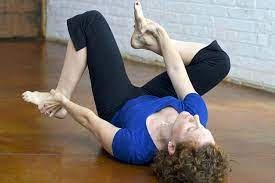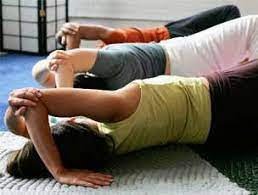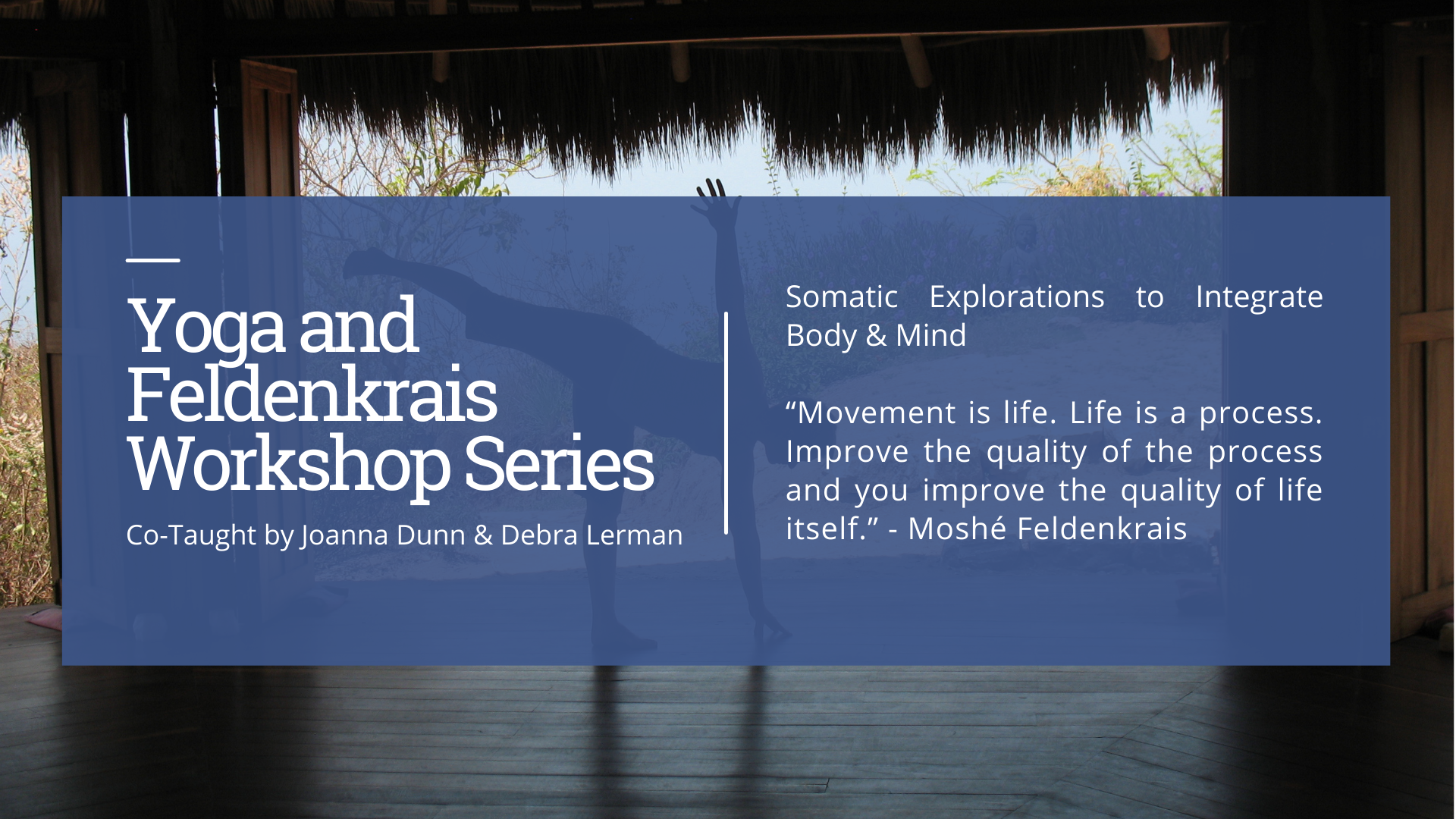Yoga and Feldenkrais® Suite:
5 part series exploring the integration of body and mind
co-taught with Debra Lerman, Physical Therapist, and Feldenkrais® Practitioner
More than 20 hours of lecture and workshop - pre-recorded and On-Demand!
The Yoga & Feldenkrais® Suite is available ala carte or complete
“Movement is life. Life is a process. Improve the quality of the process and you improve the quality of life itself.” - Moshé Feldenkrais
Join us for this series of deep-dive workshops where we explore the relationship between Feldenkrais® ATM (Awareness Through Movement) and traditional Yoga Asana and what they teach us about the body.
What is Feldenkrais®?
From conception, our bodies have had limitations and traumas placed upon them that have forced us to adapt physically and mentally. Many of our habits of movement and thought come from coping mechanisms that made sense at the time but now tend to create dis-ease and chronic pain. Feldenkrais® was founded on the principle that learning to “settle” the body is essential for a calmer, more harmonious way of engaging with the continual stressors in our environment. By playing with tiny movements and exploring different and unusual ways to move the body, unnecessary muscle tension is released, and movement becomes more coordinated and free. The task of bringing attention to novel and underexplored areas of the body keeps the mind focused on the body and its patterns. (For example: Noticing how each vertebra moves or the path the shoulder blade takes as it slides across the back opens us to see ourselves more clearly without judgment.)
Are Feldenkrais® and Yoga Compatible?
The Feldenkrais Method® of somatic education and yoga are both practices that help people feel more at home in their bodies. Both use movement as a means for healing and as a means for transformation. While the ways the body moves in yoga and the Feldenkrais Method® are very different, the two practices are beautifully complementary. Yoga tends to focus on asana (poses) which place the body into certain positions, and holding these asanas helps strengthen and lengthen muscles. In Feldenkrais® lessons, the movement itself is what captures the attention of the nervous system. Small, slow, easy movements draw attention to relationships between different parts of the body, and through these movements, the brain learns how to use the body more efficiently. Discovering new relationships with our bodies and developing our capacity for new movement allows us to connect to ourselves in a whole new way which calms the mind and relaxes the body.
““Make the impossible possible, the possible easy, the easy elegant.””
A look at some of the different postures used in Feldenkrais
5-Minute Video with Joanna & Debra discussing some of the differences between yoga and Feldenkrais® and how Feldenkrais® honors each individual’s patterns by not demonstrating the somatic movements.
This special series is divided into 5 themes
Each theme follows a similar format:
Introductions (5-10 minutes)
Anatomy and Kinesiology review (15-20 minutes)
Yoga Experience (Joanna)
Feldenkrais® Awareness through Movement Lesson (Debra)
Yoga Experience (Joanna)
Deep Rest
Discussion, Q&A, Reflections
Theme 1: Body & Breath, Parts 1 & 2 - Our breath is as individual as our signature. Our breath is intimately connected with our consciousness. Where there is freedom of breath, there is ease and harmony of thought and action. Using the combined practices of Feldenkrais Awareness through Movement® (Somatics), restorative yoga, and yogic pranayama, we journey into the quiet space of the breath to free the mind and heart. We begin our exploration with an overview of the anatomy and kinesiology of the breath visualizing and informing our experience of our breath. In this workshop, Debra Lerman guides a 30-45 minute gentle movement series bringing awareness to and creating freedom in the physical aspects of breath. In the latter half of the workshop, we learn to rest deeply in our breath by combining restorative yoga and guided yogic pranayama (breath consciousness).
Theme 2: Balance, Parts 1 & 2 - Balance is one of the most inclusive of all of the activities we can engage in, as it uses our eyes, our inner ears, feedback from the nerve endings in our joints, and the small muscles nearest our spine. Everybody talking to everybody else! In this workshop, we begin with a little introduction to the anatomy and physiology of balance, then provide a somatic movement lesson to embody your learning, grow it with some classic yoga asanas, and integrate and quiet the whole party with pranayama breathing: challenging, exciting, and ultimately satisfying and fun.
Theme 3: Myofascial Meridians, Lateral Line & Spiral Line - This concept arose initially through a contemporary of Moshe Feldenkrais' named Ida Rolf. Her revolutionary bodywork, now called "Rolfing" or "Structural Integration", worked directly with the layers of fascia or connective tissue which, previously believed to be inert, is quite alive and changeable. A student of hers, Thomas Myers, has taken her concepts and formalized them identifying 12 fascial "lines" or meridians. In yoga, we do plenty of side-bending and twisting. In fact, some might say that these are some of the most delicious and refreshing poses that yoga offers, enlivening the spine and nervous system. We also do a fair bit of side bending and twisting in daily life - just think of reaching for a high shelf or turning to look over your shoulder to see something behind you. Yet many of us can become restricted on one side either through injury or trauma, through scoliotic changes in the spine, or simply through dominant hand use. Yoga and Feldenkrais® movements can create fluidity and spaciousness in both fascial lines.
Theme 4: Myofascial Meridians, Back Line & Front Line - In yoga, we become familiar with restrictions in the front and back of the body through forward and back bends. In daily life, maintaining integrity and fluidity in both the front and backline allows us to lean over and pick things up and or maintain proper posture which is so important to the healthy functioning of our organs. put on our shoes. This series is great if you have tight hamstrings, hips, or back, or struggle with maintaining proper posture.
Theme 5: Myofascial Meridians: Psoas & Deep Front Lines - Sooooo...what's the big deal about the Psoas (pronounced so-az)? The psoas muscles are somewhat elusive yet critically important muscles in everything that we do in movement - walking, cycling, skiing, running, etc. Every time we use our legs, our psoas muscles are involved. And yet they are DEEP in our bodies so we can't see them contract and most of us can't feel them. Healthy functioning of our psoas is critical to a healthy body. This workshop brings greater awareness to this important pair of muscles. In part 2 of this workshop, we move into the Deep Front Line which ties together the souls of the feet, the adductors, deep core muscles, respiratory diaphragm, the “core” in the neck and chest all the way up to the jaw! Our fluidity, agility, and emotional stability are all impacted by balance (or the lack thereof) in the DFL.
Learn more about Debra Lerman on her website: DebraLerman.com



